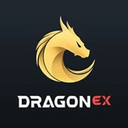Review on Wrapped Bitcoin by Azad Aliyev

This is my review and it's about Wrapped Bitcoin
Wrapped Bitcoin is Bitcoin that has been converted for use in the Ethereum ecosystem. Launched in January 2019, WBTC is an Ethereum token backed by Bitcoin, meaning one WBTC is always equal to one Bitcoin. The WBTC token allows users to interact with Ethereum's various decentralized applications (dApps) and specifically Ethereum's decentralized finance (DeFi) ecosystem.
The WBTC token was created using Ethereum's ERC-20 token standard to provide Bitcoin liquidity to the DeFi ecosystem. Cryptocurrency users with only Bitcoin could not access and use DeFi dApps built on the Ethereum protocol previously. DeFi projects have had the opportunity to access greater market cap and higher trading volume of the Bitcoin community through WBTC Ethereum tokens.
Bitmedia Referral
Standard usage for WBTC is collateral or loan repayment commitment when taking a cryptocurrency loan on DeFi platforms. Upon repayment of the borrowed cryptocurrency, the deposit is returned in the form of wBTC. If the collateral is liquidated, WBTC is compensated by the platform.
Who Created Wrapped Bitcoin?
The initial developers of the Wrapped Bitcoin protocol were BitGo Inc, Kyber Network, and Ren (formerly Rebublic Protocol). This consortium published the wBTC White Paper on January 24, 2019, and on January 31, 2019, the token was launched with eight vendors facilitating Bitcoin to wBTC conversions. Other vendors joined later.
Wrapped Bitcoin Management
The WBTC protocol is controlled by a decentralized autonomous organization (DAO). As of this writing, the WBTC DAO has 17 members representing stakeholders in the DeFi ecosystem.
Each member of the Wrapped Bitcoin DAO has a key to its multi-signature wallet that protects the system. Members with these keys; they can vote to add or remove members and make changes to the smart contracts on which the system is built.
The public can view and examine both the printing and burning of WBTC on the Ethereum and Bitcoin blockchains. As an added protection, BitGo regularly audits the system and initiates a proof-of-reservation process on the Bitcoin blockchain that allows individuals to verify that their Bitcoin reserves are valid.
The development and use of WBTC is a sign that the interoperability between Bitcoin and Ethereum is facilitating the growth of DeFi and has the potential to add value for users in the rapidly maturing crypto ecosystem.
How WBTC Works
A Wrapped Bitcoin is created when you request an Ethereum-based ERC-20 token from a Merchant in exchange for your Bitcoin. Upon receiving the request, the merchant conducts the Know Your Customer (KYC) and Anti-Money Laundering (AML) process to verify your identity and initiates a transaction with a Custodian (Customer) (BitGo is currently WBTC's sole custodian).
The custodian then prints a certain number of WBTC and sends them to the seller's Ethereum address.
Then you and the seller; either on a centralized exchange (CEX) or a decentralized exchange, you execute a trade via a peer-to-peer transaction (known as atomic swap), leaving the seller with Bitcoin and you with your WBTC.
Advantages of WBTC
After learning about the existence of WBTC, “Why would I want to convert my BTC to WBTC?” you may wonder. However, there are many reasons why an investor would want to bundle their BTC. It primarily provides integration into the Ethereum ecosystem. Ethereum has the largest ecosystem for any cryptocurrency.
This vast network includes private wallets, Dapps, DEXs, games and smart contracts. wBTC users can even access DeFi lending and borrowing networks without directly giving up or trading their Bitcoins. In short, WBTC gives digital asset holders the freedom to explore other blockchains. Apart from this, other advantages are as follows:
Liquidity
Another important advantage WBTC brings to the market is greater liquidity. The Ethereum ecosystem is diverse and dispersed. This distribution of funds can create a scenario where DEXs (decentralized exchanges) and other platforms lack the necessary liquidity to function optimally. Low liquidity makes an exchange less effective because users cannot exchange their tokens quickly and in the amount they want. WBTC integrates the liquidity of BTC into the flexibility of the Ethereum ecosystem. In this way, WBTC closes the liquidity loop between many CeFi and DeFi products.
Scalability
Scalability is another big advantage of WBTC. Because wrapped tokens reside directly on Ethereum's blockchain rather than Bitcoin, transactions with WBTC are faster and cost less. Additionally, you have more processing and storage options.
Speed
Another benefit of WBTC is speed. Wrapped Bitcoin transactions clear faster than Bitcoin transactions because WBTC is placed on the Ethereum blockchain, which adds a new block every 15 seconds; BTC is placed on the Bitcoin blockchain, which adds a new block every ten minutes. Because of this functionality, WBTC can move between Ethereum wallets, exchanges and services much faster than BTC.
Functionality
Wrapped BTC provides users with more functionality compared to regular BTC. For example, BTC in its true form lacks full smart contract capabilities. But WBTC can benefit from Ethereum's robust smart contracts. Smart contracts are self-executing pre-programmed protocols. They are considered the core technology of the blockchain industry.
WBTC Staking
Staking is one of the most popular DeFi functions. There are multiple versions of staking protocols currently in effect. Most of these require a user to lock the cryptocurrency into a smart contract for an agreed period in exchange for the reward. Users who convert their BTC to WBTC can benefit from these next-generation protocols. Platforms like CoinList, for example, allow you to automatically earn rewards by staking WBTC in your network wallet.
DeFi BTC
A large part of the DeFi ecosystem (and DApps) is based on the Ethereum network rather than the Bitcoin blockchain. This can be extremely frustrating for BTC holders, as it means they are nearly impossible to get involved unless they sell their crypto holdings or buy others.
Since WBTC.network launched in January 2019, several DeFi protocols, including MakerDAO, Dharma, Compound, and Kyber Network, have begun allowing borrowers to use WBTC as collateral. It can be argued that the expansion of DeFi caused the birth of WBTC, but we can say that it was the spark that ignited the wBTC fire.
Is Wrapped Bitcoin “Real” Bitcoin?
No. Wrapped Bitcoin is not Bitcoin.
As we mentioned earlier, wBTC is an ERC20 token that runs on the Ethereum blockchain. It is powered by 1:1 Bitcoin through the token's mintage mechanism, so when you hold WBTC you are not holding real Bitcoin.
After tokenizing Bitcoin to WBTC; Some of the privacy features of Bitcoin, the ability to make instant payments over the Lightning Network, and the security of the Bitcoin network are lost.
- it is reliable
- findable in many wallets
- its name is false for its structure, it is ethereum based












